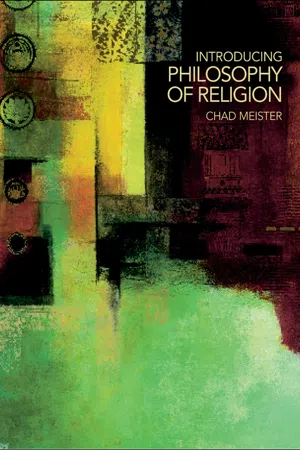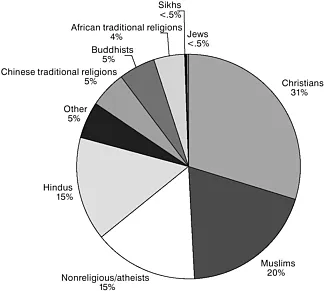
- 246 pages
- English
- ePUB (mobile friendly)
- Available on iOS & Android
Introducing Philosophy of Religion
About this book
Does God exist? What about evil and suffering? How does faith relate to science? Is there life after death? These questions fascinate everyone and lie at the heart of philosophy of religion. Chad Meister offers an up-to-date introduction to the field, focussing not only on traditional debates but also on contemporary concepts such as the intelligent creator. Key topics, such as divine reality and the self and religious experience, are discussed in relation to different faiths.
Introducing Philosophy of Religion:
• offers a lucid overview of contemporary philosophy of religion
• introduces the key figures in the history of philosophy of religion
• explores the impact of religious diversity and pluralism
• examines the main arguments for and against the existence of God and the nature of the divine
• looks at science and issues of faith and reason
• explores how the different religions approach the concept of life after death.
The wealth of textbook features, including tables of essential information, questions for reflection, summaries, glossary and recommendations for further reading make the book ideal for student use. Along with its accompanying Reader, this is the perfect introductory package for undergraduate philosophy of religion courses.
Visit the book's companion website at www.routledge.com/textbooks/9780415403276. Features include:
- an interactive glossary
- a timeline
- powerpoint slides on all the chapters
- chapter outlines
- lists of objectives for study.
Frequently asked questions
- Essential is ideal for learners and professionals who enjoy exploring a wide range of subjects. Access the Essential Library with 800,000+ trusted titles and best-sellers across business, personal growth, and the humanities. Includes unlimited reading time and Standard Read Aloud voice.
- Complete: Perfect for advanced learners and researchers needing full, unrestricted access. Unlock 1.4M+ books across hundreds of subjects, including academic and specialized titles. The Complete Plan also includes advanced features like Premium Read Aloud and Research Assistant.
Please note we cannot support devices running on iOS 13 and Android 7 or earlier. Learn more about using the app.
Information
1 Religion and the philosophy of religion
RELIGION AND THE WORLD RELIGIONS

Table of contents
- Cover Page
- Title Page
- Copyright Page
- List of illustrations
- Preface
- Introduction
- 1 Religion and the philosophy of religion
- 2 Religious diversity and pluralism
- 3 Conceptions of ultimate reality
- 4 Cosmological arguments for God’s existence
- 5 Teleological arguments for God’s existence
- 6 Ontological arguments for God’s existence
- 7 Problems of evil
- 8 Science, faith, and reason
- 9 Religious experience
- 10 The self, death and the afterlife
- Glossary
- Notes